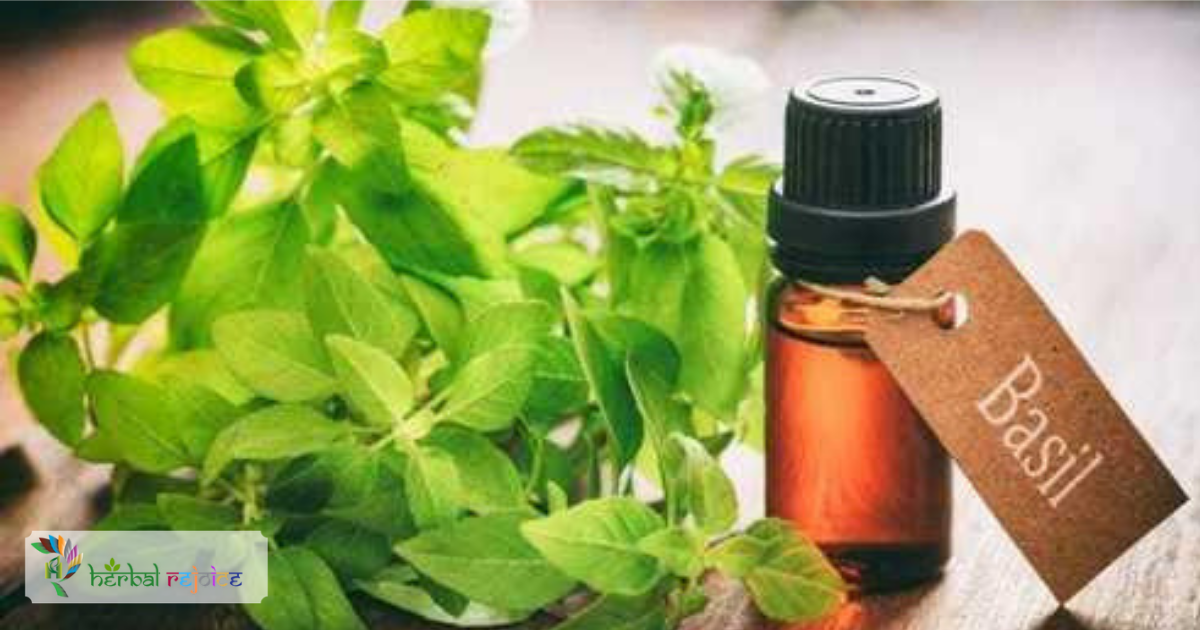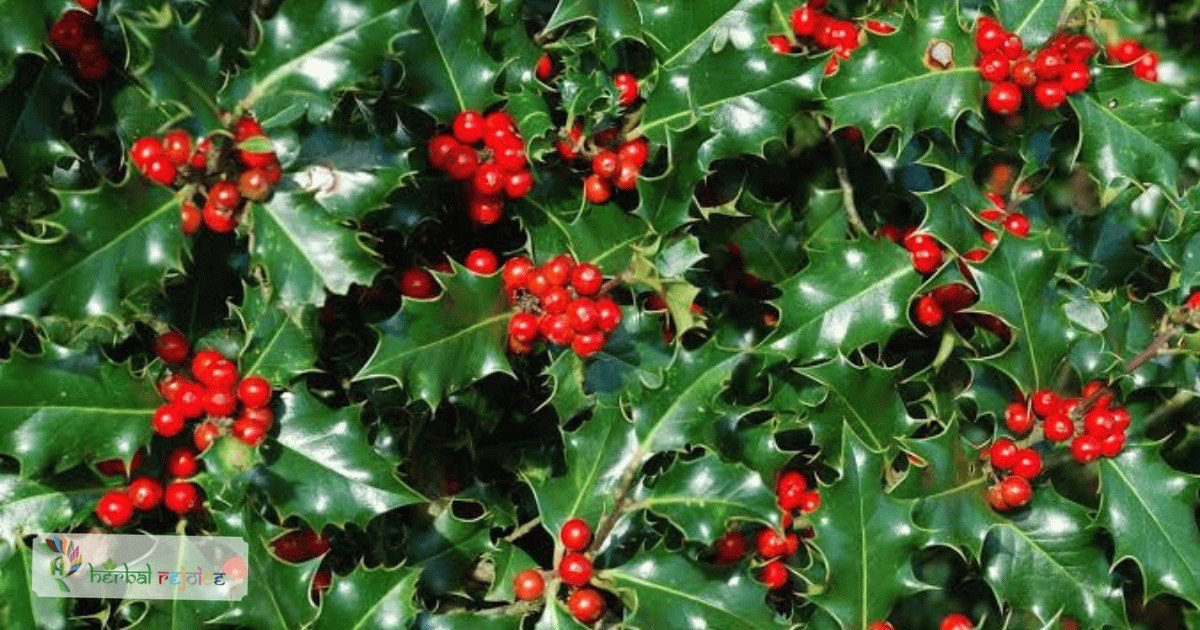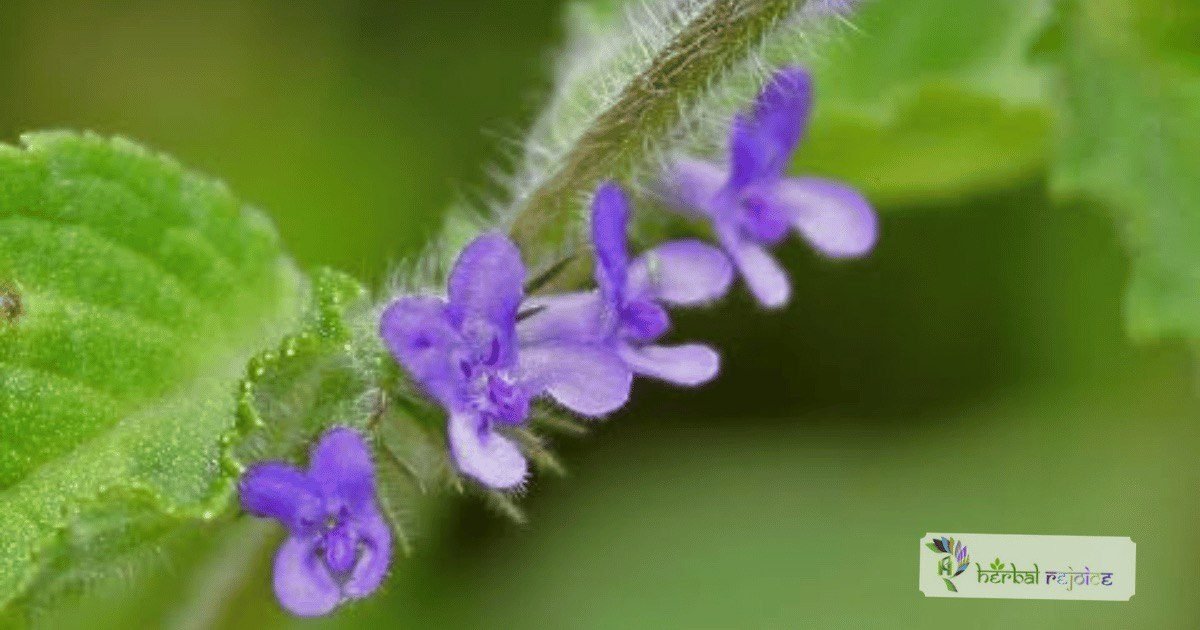Introduction
Holy Basil (Ocimum sanctum Linn.), also known as Sacred Basil, is a highly revered plant in India. Holy Basil, commonly grown in houses, gardens, and temples consists of anti-fungal, anti-malarial and anti-bacterial properties.
A Powerful Rejuvenator

Traditional Uses Of Holy Basil
The leaves of Holy Basil are known for their carminative, stomachic, and antispasmodic properties. They are also used as an antiasthmatic, antirheumatic, and expectorant. Additionally, the leaves have stimulating and hepatoprotective effects. The seeds of Holy Basil are used in the treatment of genitourinary diseases.
The root of the plant has been found to have antimalarial properties. Holy Basil is also considered an adaptogenic herb, which means it helps the body adapt to stress and promotes overall well-being.
The essential oil of Holy Basil is known for its antibacterial and antifungal properties. It contains compounds such as eugenol, carvacrol, nerol, and eugenolmethylether.
Key Components and their Benefits
Studies have found that Holy Basil leaves contain ursolic acid, apigenin, luteolin, apigenin-7-O-glucuronide, luteolin-7-O-glucuronide, orientin, and molludistin. Ursolic acid, specifically, has shown significant protection of mast cell membrane and decreased histamine release.
The ethanolic extract of fresh leaves, as well as the volatile and fixed oils from the seeds, have shown antiasthmatic activity. They also protect against histamine and dyspnoea. Holy Basil has also demonstrated anti-inflammatory activity against various inflammatory agents.
Furthermore, Holy Basil has hepatoprotective effects and can protect against liver damage caused by paracetamol. It also exhibits antiulcerogenic properties and has been shown to lower blood sugar levels in normal and diabetic rats.
In addition to its medicinal properties, Holy Basil has been shown to affect the size of urinary brushite crystals and has immunostimulant effects.
Dosage Of Holy Basil
The recommended dosage of Holy Basil is 1-2 grams of seed powder or 50-100 mL of infusion for the plant.
Conclusion
Overall, Holy Basil is a powerful herb with a wide range of health benefits. Its traditional use in Ayurvedic medicine is supported by scientific studies, making it a valuable addition to any herbal medicine cabinet.
Frequently Asked Questions(FAQs)
What is Holy Basil and why is it revered in India?
Holy Basil, also known as Sacred Basil, is a highly revered plant in India. It is commonly grown in houses, gardens, and temples.
What is the traditional name for Holy Basil in Ayurvedic medicine?
In Ayurvedic medicine, Holy Basil is known as Tulasi.
What are the properties of Holy Basil leaves?
The leaves of Holy Basil are known for their carminative, stomachic, and antispasmodic properties. They are also used as an antiasthmatic, antirheumatic, and expectorant.
What are the uses of Holy Basil seeds?
The seeds of Holy Basil are used in the treatment of genitourinary diseases.
Does Holy Basil have any antimalarial properties?
Yes, the root of Holy Basil has been found to have antimalarial properties.
What is an adaptogenic herb, and how does Holy Basil fit into this category?
An adaptogenic herb helps the body adapt to stress and promotes overall well-being. Holy Basil is considered an adaptogenic herb.
What are the antibacterial and antifungal properties of Holy Basil essential oil?
The essential oil of Holy Basil is known for its antibacterial and antifungal properties. It contains compounds such as eugenol, carvacrol, nerol, and eugenolmethylether.
What compounds are found in Holy Basil leaves?
Studies have found that Holy Basil leaves contain ursolic acid, apigenin, luteolin, apigenin-7-O-glucuronide, luteolin-7-O-glucuronide, orientin, and molludistin.
What is the significance of ursolic acid in Holy Basil leaves?
Ursolic acid has shown significant protection of mast cell membrane and decreased histamine release.
What antiasthmatic properties does Holy Basil have?
The ethanolic extract of fresh leaves, as well as the volatile and fixed oils from the seeds, have shown antiasthmatic activity. They also protect against histamine and dyspnoea.
Does Holy Basil have any anti-inflammatory activity?
Yes, Holy Basil has demonstrated anti-inflammatory activity against various inflammatory agents.
Can Holy Basil lower blood sugar levels?
Yes, Holy Basil has been shown to lower blood sugar levels in normal and diabetic rats.
Does Holy Basil have any antiulcerogenic properties?
Yes, Holy Basil exhibits antiulcerogenic properties.
How can Holy Basil affect the size of urinary brushite crystals?
Holy Basil has been shown to affect the size of urinary brushite crystals.
What other effects does Holy Basil have on the body?
Holy Basil has immunostimulating effects.
What is the recommended dosage of Holy Basil?
The recommended dosage of Holy Basil is 1-2 grams of seed powder or 50-100 mL of infusion for the plant.
Is there scientific evidence supporting the traditional use of Holy Basil?
Yes, the traditional use of Holy Basil in Ayurvedic medicine is supported by scientific studies.
Would Holy Basil be a valuable addition to an herbal medicine cabinet?
Yes, Holy Basil is a powerful herb with a wide range of health benefits, making it a valuable addition to any herbal medicine cabinet.
Can Holy Basil be grown at home?
Yes, Holy Basil can be grown in houses, gardens, and temples.





